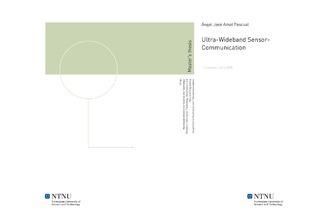Ultra-Wideband Sensor-Communication
Abstract
One of the fundamentals concerns in wireless communications with battery operated terminals is the battery life. Basically there are two ways of reducing power consumption: the algorithms should be simple and efficiently implemented (at least in the wireless terminals), and the transmit power should be limited. In this document is considered discrete time, progressive signal transmission with feedback [ramstad]. For forward Gaussian channel, with an ideal feedback channel, the system performs according to OPTA (Optimal Performance Theoretically Attainable[berger]). In this case, with substantial bandwidth expansion through multiple retransmissions, the power can be lowered to a theoretical minimum. In the case of a non-ideal return channel the results are limited by the feedback channel's signal-to-noise ratio. Going one step forward, a more realistic view of the channel will consider fading due to multiple reflections, especially in indoors scenarios. In this thesis it is discussed how to model the channel fading and how to simulate it from different probability distributions. After, some solutions to avoid, or at least reduce, all the undesirable effects caused by the fading will be proposed. In these solutions, the fading characteristics (power and dynamic range) and the application requirements will play a vary important role in the final system design. Finally, a realistic signal will be tried to be sent in a realistic scenario. This will be audio transmission over fading channels. Then, the results will be compared in general terms to a similar equipment such as generic wireless microphone system.
